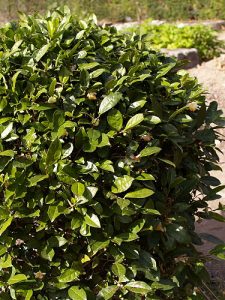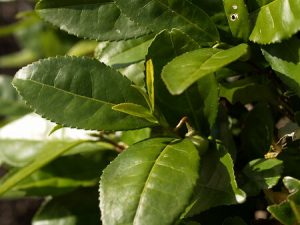 I’m sure you’ve drank tea plenty of times, but have you ever wondered where it comes from?
I’m sure you’ve drank tea plenty of times, but have you ever wondered where it comes from?
The Camellia sinensis is commonly known as the tea plant, tea tree and tea shrub. This plant is native to China and south Asia.
The Chinese were the first to drink green tea and have done so for thousands of years!
With regards to tea production, there are two main varieties:
- Camellia sinensis var. sinensis
Found in China and Japan. It commonly grows from 2 to 3m (6.5 to 9.8 feet) tall and the leafs are 6 to 15 cm (2.3 to 5.9 inches) long.
- Camellia sinensis var. assamica
Cultivated mostly in India and Sri Lanka. It’s much taller than the Chinese tea plant, reaching 8 to 15m (26.2 to 49.2 feet). Its leaves are also longer, measuring 12 to 20 cm (4.7 to 7.8 inches) long.
For the rest of this article I will talk about the Chinese tea plant, especially the one grown in Japan.
The tea plant grows in tropical and subtropical climates. It doesn’t fare well in dry weather, where it may wither. It prefers acidic soils (pH 4.5 – 5.0) and is also resistant to low levels of sunlight.
A new tea plant takes about 4 years until it can be harvested. The tea plant can then remain productive for 30 to 45 years.
After 10 years of being planted, the tea plant becomes a bit too tall. In fact, if left on its own for a long time it will eventually become a tree! The solution is to trim the tea plant every 5 years.
 The tip (bud) and the upper (younger) leaves are harvested for processing.
The tip (bud) and the upper (younger) leaves are harvested for processing.
The younger the tea leaves, the better the quality of the resulting tea. An exception is kukicha, since it’s not made from the leaves, but from the stems and twigs of the tea plant instead.
Depending on the cultivation method and of the way the leaves are processed, different types of green tea can be made.
If you haven’t already, I suggest that you begin by reading my post about sencha, the most common type of green tea found in Japan.




